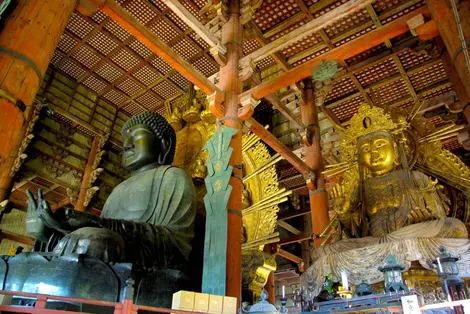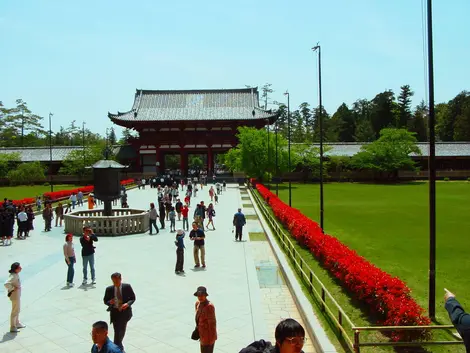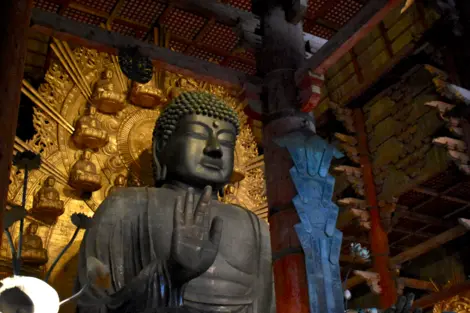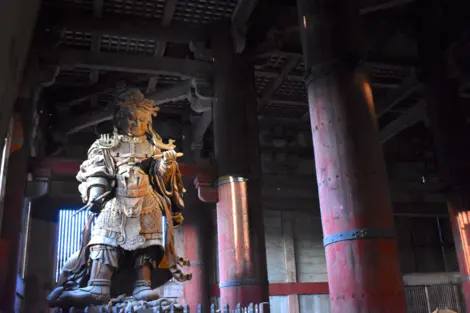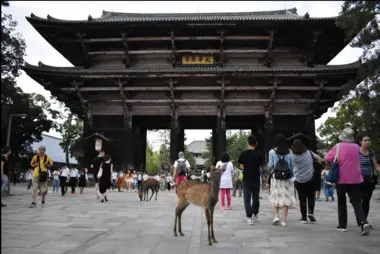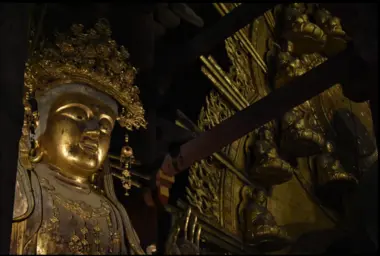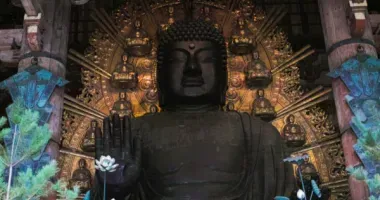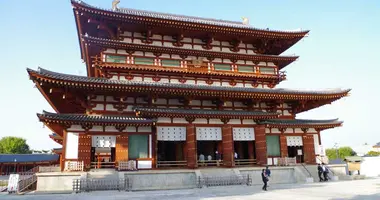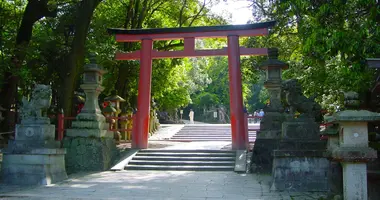Todai-ji, the temple to the great Buddha of Nara
- Published on : 28/08/2020
- by : R.Z. / J.R.
- Youtube
Todai-ji, a UNESCO World Heritage Temple
The Todai-ji is an important Buddhist temple located in the heart of the city of Nara, in Kansai. This famous temple located not far from Nara Park houses a monumental bronze Buddha statue in the Daibutsu-den building. A must when visiting the city!
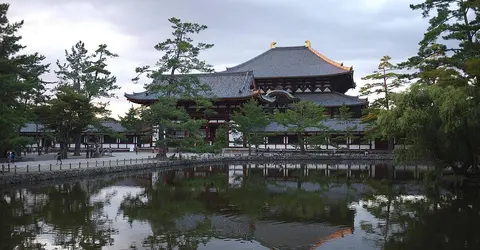
View of Todai-ji
Flickr Ludger Heide, https://creativecommons.org/licenses/by-sa/2.0/
The Todai-ji, a historic temple
A visit to the city of Nara, located east of Osaka, would not be complete without a detour to the majestic Todai-ji. The latter, together with the encounter with the park's sika deer, is even the heart of the excursion.
- Read also: The top 10 of Nara by our travel angel
The Todai-ji, literally "great temple of the East", was commissioned in 743 by Emperor Shomu (701-756), when Nara was the imperial capital of the country. The Todai-ji building was completed eight years later. It was rebuilt several times, its current form being fixed during restorations of the Edo period (1603 - 1868).
The current Daibutsu-den, the hall of the Great Buddha, was completed in 1707, and has smaller dimensions compared to the original building; from being rectangular, it became square and lost a third of its size. However, it remains, even today, the largest covered wooden building in the world, and is classified as a UNESCO World Heritage Site. With its 47 meters high, the Daibutsu-den and its huge wooden pillars impress from the first discovery.
An ancient command center of Buddhism
From its foundation, the Todai-ji had the function of concentrating the different Buddhist sects of Japan from the Nara period (710-794), the Nanto Rokushu or Six sects of Nara, and of administering them. At the head of all the temples, he was the authority and the official monks had to be ordained there.
Its reputation spread thanks to the monk Kukai (774-835), the famous founder of the sacred space of Mount Koya, and at the initiative of the Shingon sect, in charge of the sacerdotal affairs of the empire and the administration of Todai. -ji from 810. Today, this temple remains the source and most active place of worship of the Kegon sect, one of the six streams of the Nara era.
The large bronze statue of the Buddha
The huge statue of Buddha that one discovers when entering the Daibutsu-den is undoubtedly the major piece of Todai-ji, which greatly contributes to its celebrity. It is indeed the largest bronze seated Buddha in Japan.
The Buddha, fifteen meters high (18 meters with the pedestal), has the most sophisticated hairstyle of the archipelago, made of more than hundreds of bronze balls. Resting on a lotus flower, he presents his right palm, thus realizing the mudrâ said of the absence of fear, meaning appeasement and protection.
We are indeed dealing here with Vairocana ("the Radiant All"), the absolute Buddha, not to be confused with the historical Buddha, Siddharta Gautama (also called Sakyamuni), who is embodied in a bronze idol that can be grasped by ordinary men remaining out of reach due to its impressive height.
- Read also: Buddhism in Japan
The construction of this Great Buddha in the middle of the 8th century was no trifle. Its melting would have exhausted most of Japan's copper reserves at the time, which explains why there are very few other bronze statues at the same time. The opening ceremony of the sacred space in 752 was symbolized by the awakening of the Buddha to whom eyes were drawn. The many gifts collected on the occasion of this event now make up the treasure room (Shosoin), located to the northwest of Daibutsu-den. Originally, the monumental statue was covered with gilding.
Unfortunately, only a few elements remain of this original statue: part of the base and the knees. Everything else thus dates from the restorations made in 1692.
A great wonder that hides many others
The Todai-ji cannot be summed up solely with the large bronze Buddha. As soon as you enter, the magnificent Nandaimon (Great South Gate) which you have to pass creates a sensation, framed by two statues of benevolent kings. The latter is one of the last remains of the old enclosure.
Within the Daibutsu-den itself, an opening at the foot of a pillar (behind the left shoulder of the Buddha) lets through any persevering person who wishes to try to obtain the promise of enlightenment in the next life.
Also not to be overlooked are the frightening wooden sculptures of the Buddha's guardians who lurk behind him in the shadows, as well as the two gleaming gold-covered wooden Bodhisattvas seated beside him.
- To read: Buddhist statuary in Japan
For those who wish to deepen the study of the history of Todai-ji, a museum awaits the visitor next to the Nandaimon gate. Finally, again to recall the impermanence of things and the smallness of man, cross the vast expanses of lawn, turn left, follow the enclosure of Daibutsu-den and take the flight of stairs until arriving at the hall of Nigatsu-do, on the terrace of which the entire city of Nara is revealed...
Address, timetable & access
Address
Phone
+81 (0)74 222 5511Timetable
Daibutsuden Kasuga Taisha mae stop of the bus lines provided by JR West or Kintetsu Railways from their respective stations. 20 min on foot from Nara station.Price
Admission: 600 yen ($5.25/4:75€) for the Daibutsuden and 600 yen for the museum alone. Ticket combining the museum and the Daibutsuden for 1000 yen ($8.50/7.75€).Access
Open daily. November to February: 8 am - 4.30 pm. March: 8 am - 5 pm. April to September: 7.30 am - 5.30 pm. October: 7.30 .m - 5 pm. The museum opens at 9.30 am.




